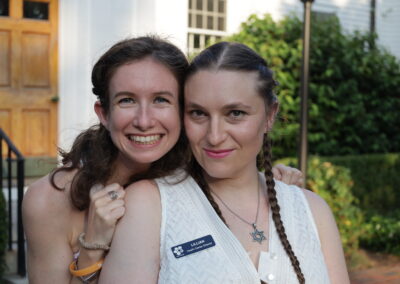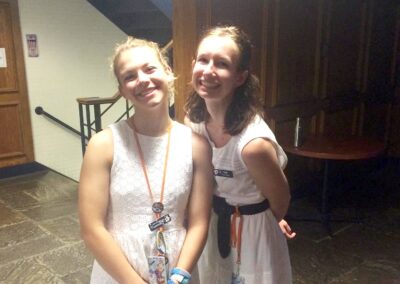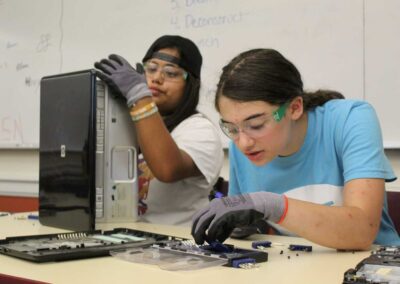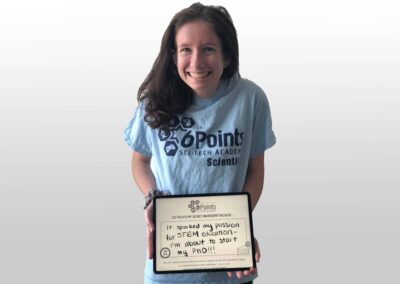Reconstructing the World, One Megabyte at a Time
By Tess Levinson
I first learned Scratch as a counselor assisting with Sci-Tech’s video game design workshop in 2014. At the time, I was a rising college freshman who liked science and psychology but was interested in education. I knew I wanted to do something where I could make a difference in the world and in people’s lives.
Working at Sci-Tech for the past 10 years, I’ve explored, designed, and begun to make that difference. As a pioneer counselor, I was lucky enough to be part of developing the Sci-Tech we know and love. As the first Machon Unit Head (now known as the Machon Director), I designed a Machon curriculum unique to the Sci-Tech context. Most recently, I’ve developed the Sci-Tikkun Olam workshop for rising 11th graders, where we discuss how social justice issues intersect with issues in the fields of STEM, in turn learning how we can use our work in STEM to make the world a better place. In running and watching each of these programs, I’ve seen the role that Sci-Tech, experiential STEM learning, and the infusion of STEM learning with values has on building relationships and community, collaboration, and a love of the field. I’ve made this observation and discovery not just for campers, colleagues, and campers who have become colleagues, but also for myself.
When I am not at camp, I am a PhD student at Boston College in the DevTech Research Group, the research group that developed ScratchJr. There are many ways to make the world a better place through science and technology, but I work with two processes: design-based research, where we create using the design process and ask research questions through the process of design and use, and research-practice partnerships, where we work with community organizations and NGOs to create research programs that actively benefit and serve the needs of the community. As a PhD student, I co-design and evaluate coding and robotics programs for children in schools in Boston and the United States, in Argentina, and in Haifa and Jerusalem.
Community-based research-practice partnerships allow researchers to rely on and build connections with partners. Connection, or kesher, is one of our core values at camp, and I have seen first-hand the role connection plays as we learn and co-create. One could collaborate with an anonymous acquaintance, but learning and working together at camp is special because it builds on the connections and relationships we have. In my research, I use this knowledge to prioritize my relationships with my colleagues at our community partners, understanding that the strength of those connections supports our design and research work.
My favorite aspect of design-based research is that it allows me to use both design and research to do my part in attempting to make the world a better place. When I co-design early childhood coding and robotics programs that highlight social emotional and values-based learning, I provide materials for teachers to use to teach a new subject in a playful way, often a subject that they do not have the time or resources to learn. When I research the unique needs of homeless children, or bilingual children, or children who read from right-to-left instead of left-to-right in learning to code, I create knowledge that can lead to future discoveries and future resources allowing for better individualized resources in schools.
This year, I was a participating speaker in a workshop at the Scratch Conference on supporting children in building connections and developing social emotional skills using ScratchJr. The talk highlighted a lesson in a curriculum developed by our research group, in which multiple children collaborate to create a one-sentence story of connecting projects. At Sci-Tech, One-sentence Story is a familiar evening ritual for some halls. Using an updated yet familiar camp ritual to build connections and values through STEM, teaching STEM alongside human values, feels right.
Sci-Techkun Olam is the 11th grade workshop at Sci-Tech, but making the world a better place using STEM tools and practices is something that we can all do building on the values, lessons, and practices we take from camp along the way.
Tess Levinson (she/her) is the Lead Instructor for the Sci-Techkun Olam workshop, Sci-Tech’s two-week program for 11th grade campers. She is a doctoral research assistant at the DevTech Research Group at the Boston College Lynch School of Education and Human Development. This is her tenth year at Sci-Tech.




